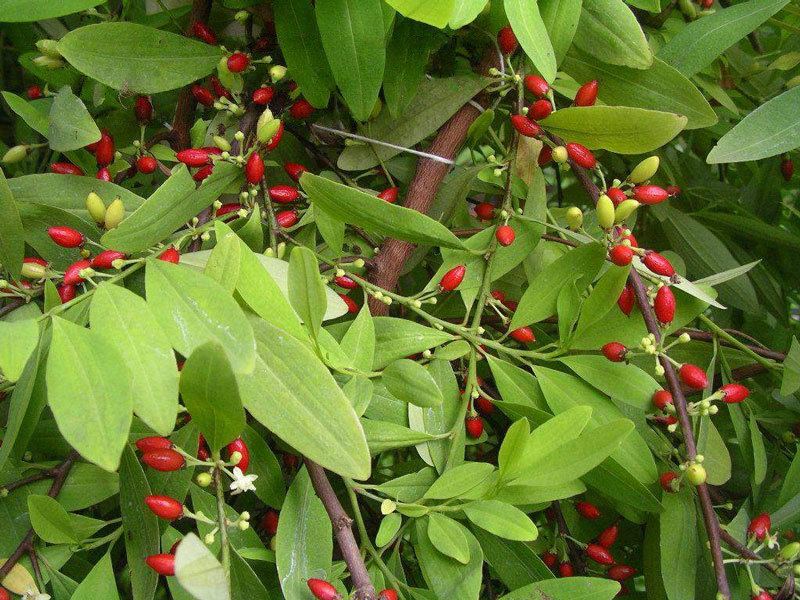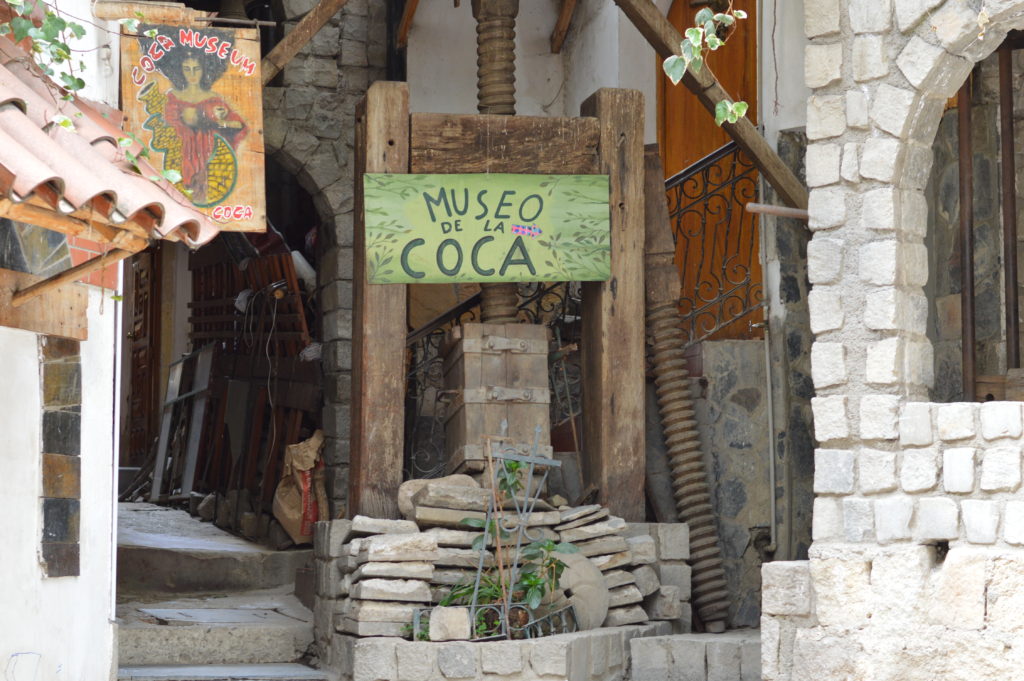The Coca Museum.
I’d first read about the Coca Museum at Atlasobscura which it describes as follows: “In some ways, the Museo de la Coca is an anti-defamation organization, although definitely the most bizarre of any similar group.” (I’m uncertain if the comment refers to other quirky museums in La Paz or the Coca Museum in Cusco.) For me, it would prove to be much more than either of those characterizations.
A brief history of coca use in the high Andes.
Although coca use is most common in the high Andes, among the earliest evidence for the use of coca is in the Peruvian coastal settlement of Huaca Prieta and dates to a period between 2500 – 1800 BCE.
(Huaca Prieta is itself a site of both importance and some controversy. Located on the Peruvian coast about 600 kilometers north of Lima, archaeologists first discovered two pieces of wood charcoal that they dated to between 15,155 and 15,182 years ago and used as evidence showing a human presence at the site. It’s controversial because the conventional belief is that ancient humans from Asia crossed the Bering land bridge and migrated south gradually populating the Americas. However, it’s also thought that conditions that would have supported this migration didn’t exist before 12,600 years ago. Accepting this early presence of humans in the Americas would overturn convention and necessitate rethinking how the continents were populated. As of this writing, the evidence at Huaca Prieta remains controversial but the examination process is ongoing.
In addition to 4,000 year old coca leaves, other discoveries at the site show traces of maize that may date from as early as 4,700 BCE {much earlier domestication than previously thought}, remains of avocado, bean, possibly cultivated squash and peppers, and a 6,000 year old indigo dyed cotton fabric which would predate by 1,500 years fabric found in Egypt that had been believed to have been the earliest use of indigo. The coca leaves, which may indicate some form of trade between people in the high Andes and those along the coast, date from near the time the site appears to have been abandoned about 3,800 years ago.)
Whatever the source of the coca at Huaca Prieta, there is no doubt about the widespread use of coca in the Andes. Evidence of coca use appears in all pre-Columbian cultures dwelling in the mountains. According to one report from the BBC, “Peruvian foraging societies were already chewing coca leaves 8,000 years ago” though it goes on to state that the evidence currently points to this early use being restricted to a “privileged class.” Even if it was limited to ceremonial purposes this very ancient Andean use and the likelihood that trade of some sort occurred between the coastal and highland areas makes its use in a coastal settlement less surprising than it might otherwise be.
[Photo of the coca plant under cultivation from Wikipedia.]
Soon after their arrival, the Europeans noted the ways in which the native people used coca. The Jesuit missionary and naturalist JosĂ© de Acosta wrote in 1558, “The Lords use coca as a royal object and a gift, and during their sacrifices, it is the one thing they most often offered, burning it in honor of their idols. The leaf is also used by the fortune teller (yatiri), the magician (paco), and the native doctor (callawaya).” Clearly, coca was, and still is, considered a sacred plant endowed with magical powers. Of course, even today miners make offerings of coca to Pachamama (Mother Earth).
The first war on coca.
The early Europeans had two important goals in South America. One was to exploit the continent’s mineral and metallic wealth and the other was to “civilize” the indigenous people by converting them to Catholicism. The native’s coca use, however, put these forces in opposition to each other.
Coca’s importance to the culture, society, and religion of the Andean people cannot be understated. For the people of the Andes the act of chewing coca (coqueo) affirmed their identity as both the children and the owners of the earth. Even today, coqueo is used as an act of self-identification and defiance. Shared coqueo use also plays an essential social function. It is an act of friendship, inclusion and solidarity.
(Although it’s the common term, chewing isn’t an accurate description of the actual process called akullikuy in Quechua. The leaves are first stripped of the tough veins then, in what is more an act of sucking than chewing, the user places a saliva-soaked ball of coca leaves in the mouth. In this way, the user can extract most of the nutritive value of the leaves which, as we will see, is substantial. Typically, they also add an alkaline substance such as lime juice that assists in extracting the alkaloids from the leaves to increase the stimulating effect.)
The Andean people make extensive use of coca in ritual and religious ceremonies. The yatiri, the paco, and the callawaya all used and continue to use coca leaves in their ceremonies. Without coca the yatiri cannot predict the future, the paco cannot protect an individual from witchcraft, break a curse, or change bad luck to good fortune, and the callawaya cannot diagnose or offer a cure to a patient.
For those among the Spanish who were determined to convert the native people to Christianity, these mystical uses for coca were highly problematic. Thus, a crucial step in converting them would, of necessity, be ending their coca use.
Conversely, it didn’t take long for the Spanish to notice some of coca’s physiological effects. In his 1558 treatise, Acosta also wrote, “To speak truthfully, I cannot be convinced that this is all a figment of the imagination. I am rather inclined to believe that there is, in fact, another force and spirit in the natives because there are no effects that can be attributed to imagination, which is how, with the help of a handful of coca leaves, they can walk for days without food…”
As a society that had no concept of money, the indigenous people of South America didn’t value metal and mineral resources in the same way as the Europeans. The Spaniards, of course, held a distinctly different view and in their acquisitional fervor saw rationing coca as among the most effective ways to “encourage” the natives to work in the mines.
While chewing coca doesn’t increase the capacity to work, it does increase endurance. The body rapidly absorbs the alkaloids which eliminates fatigue while inducing a feeling of euphoria, a sense of alertness, and an increase in activity or at least the desire to do something. The stimulating effect depresses hunger and sleepiness. The Spanish noticed all these effects and began using coca distribution to exploit the natives.
By the later part of the 16th century, aware that the miners could work for longer periods with coca as their principal source of nutrition, and thus be even more easily exploited, the Spanish not only held control over mines like the huge silver mine at PotisĂ, but they also took control of the distribution of coca leaves by creating a system of forced labor among coca growers who were called camayos. These peasants not only faced inhumane working conditions but they were often malnourished and vulnerable to disease and early death.
Meanwhile the mine owners forced the miners to work longer hours to receive their coca ration. This increased the economic importance of the plant and set the mining and coca growing interests against the religious ones. The arrival of the Spanish fundamentally altered the relationship between the indigenous people and a plant they had used for thousands of years.

